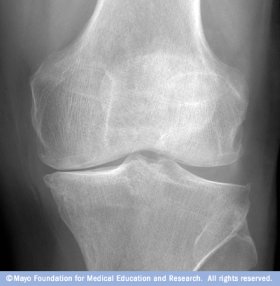|
|

|
|
I hope this newsletter finds you and your family well. It's a great time to be in Milwaukee. The weather has been great. We have Summerfest starting next week and the Tour of America's Dairyland going on right now. If you haven't stopped by the bike races, give it a try. It's great fun watching some of the best cyclists in the area and the world competing right here in our backyard. Each race is like a neighborhood block party. A couple of my favorites, the Shorewood Criterium and Downer Classic are still coming up!
The first article this month looks at one of the mainstays of knee arthritis treatment, the cortisone injection. Many insurance companies require this as the first line of treatment. But is it effective? More importantly, is it safe? Read on for an answer that may surprise you.
Atrial fibrillation is the most common heart arrhythmia and will affect 25% of us over our lifetimes. The second article looks at a tasty treat that may be effective in prevention of this common arrhythmia.
Physical education is being cut back and even eliminated from our schools on the premise that we need more time for kids to do the important academic work required for success. However, the third article suggests that physical fitness may be a key piece in the academic success of our kids.
Click on the links the the left to check out our
web site
...
|
|
Is Saline Better Than Steroids?
|
In knee osteoarthritis, steroid knee injection didn't reduce pain better than saline

Steroid knee injections are a mainstay in treatment of arthritis and are actually required by many insurance companies prior to other treatments. But are they effective? This study, from
JAMA, shows we may need to reevaluate our treatments. This randomized trial of 140 patients with symptomatic knee arthritis compared interarticular (in the joint) injections of steroid (cortisone) and saline. They found no significant difference in knee pain severity between the groups but the steroid group had loss of their knee cartilage.
Abstract:
-
Importance:
Synovitis is common and is associated with progression of structural characteristics of knee osteoarthritis. Intra-articular corticosteroids could reduce cartilage damage associated with synovitis but might have adverse effects on cartilage and periarticular bone.
- Objective:To determine the effects of intra-articular injection of 40 mg of triamcinolone acetonide every 3 months on progression of cartilage loss and knee pain.
- Design, Setting, and Participants: Two-year, randomized, placebo-controlled, double-blind trial of intra-articular triamcinolone vs saline for symptomatic knee osteoarthritis with ultrasonic features of synovitis in 140 patients. Mixed-effects regression models with a random intercept were used to analyze the longitudinal repeated outcome measures. Patients fulfilling the American College of Rheumatology criteria for symptomatic knee osteoarthritis, Kellgren-Lawrence grades 2 or 3, were enrolled at Tufts Medical Center beginning February 11, 2013; all patients completed the study by January 1, 2015.
- Interventions: Intra-articular triamcinolone (n=70) or saline (n=70) every 12 weeks for 2 years.
- Main Outcomes and Measures: Annual knee magnetic resonance imaging for quantitative evaluation of cartilage volume (minimal clinically important difference not yet defined), and Western Ontario and McMaster Universities Osteoarthritis index collected every 3 months (Likert pain subscale range, 0 [no pain] to 20 [extreme pain]; minimal clinically important improvement, 3.94).
- Results: Among 140 randomized patients (mean age, 58 [SD, 8] years, 75 women [54%]), 119 (85%) completed the study. Intra-articular triamcinolone resulted in significantly greater cartilage volume loss than did saline for a mean change in index compartment cartilage thickness of -0.21 mm vs -0.10 mm (between-group difference, -0.11 mm; 95% CI, -0.20 to -0.03 mm); and no significant difference in pain (-1.2 vs -1.9; between-group difference, -0.6; 95% CI, -1.6 to 0.3). The saline group had 3 treatment-related adverse events compared with 5 in the triamcinolone group and had a small increase in hemoglobin A1c levels (between-group difference, -0.2%; 95% CI, -0.5% to -0.007%).
- Conclusions and Relevance: Among patients with symptomatic knee osteoarthritis, 2 years of intra-articular triamcinolone, compared with intra-articular saline, resulted in significantly greater cartilage volume loss and no significant difference in knee pain. These findings do not support this treatment for patients with symptomatic knee osteoarthritis.
I have done hundreds of knee injections over the course of my career. Early on, most were steroid (cortisone) injections. They do seem to give people some temporary relief and are helpful for inflammatory conditions. However, more recently I have started doing other types of injections, mainly dextrose or platelet-rich plasma, especially when the condition looks like something that will require recurrent injections. I have found that people get relief from these treatments as well. This study compared repetitive injections of steroid or saline every 3 months for 2 years. The authors found no significant difference in knee pain between the groups but the steroid group had increased loss of cartilage at the end of the study. This is a risk that we have known about, but have always balanced it with the idea that it will provide pain relief. Other studies have shown that hyaluronic acid (Synvisc) is slightly better than saline and prolotherapy (dextrose) injections are slightly better than saline. This study shows that perhaps what is injected isn't all that important, but the fact that we inject something is beneficial. We need to be aware of not doing harm if we are going to use repetitive steroid injections so perhaps other substance should be considered for injection besides steroids, especially for chronic conditions. I was already moving away from most of my steroid injections for arthritis, but this may accelerate my transition to other substances for injection.
|
Good Rhythms From Chocolate
|
Chocolate consumption may lower risk of atrial fibrillation
Atrial fibrillation (AF) is the most common arrhythmia, affecting over 33 million patients worldwide, and 25% of adults will develop AF over their lifetime. People with AF have higher rates of heart failure, hospitalization, stroke and cognitive impairment as well as lower quality of life.
Unfortunately, there are no effective, proven therapies for the primary prevention of AF. Nearly 60% of AF can be attributed to modifiable risk factors such as high blood pressure, smoking, and obesity.
Because there is no cure for AF and patients are forced to manage AF as a chronic disease, prevention of AF is the optimal approach.
Lifestyle modification like weight loss and smoking cessation may contribute to AF prevention.
This study, from the journal Heart, found another preventive strategy, regular chocolate intake. People who ate one serving of chocolate (1 oz) per week had a 17% lower rate and 2-6 servings/week had a 20% lower risk of atrial fibrillation than those who ate chocolate less than once/month.
-
Objective: To evaluate the association between chocolate intake and incident clinically apparent atrial fibrillation or flutter (AF).
-
Methods: The Danish Diet, Cancer, and Health Study is a large population-based prospective cohort study. The present study is based on 55,502 participants (26,400 men and 29,102 women) aged 50-64 years who had provided information on chocolate intake at baseline. Incident cases of AF were ascertained by linkage with nationwide registries.
-
Results: During a median of 13.5 years there were 3,346 cases of AF. Compared with chocolate intake less than once per month, the rate of AF was lower for people consuming 1-3 servings/month (hazard ratio (HR) 0.90, 95% confidence interval (CI) 0.82 to 0.98), 1 serving/week (HR 0.83, 95% CI 0.74 to 0.92), 2-6 servings/week (HR 0.80, 95% CI 0.71 to 0.91) and ≥1 servings/day (HR 0.84, 95% CI 0.65 to 1.09; p-linear trend <0.0001), with similar results for men and women.
-
Conclusions Accumulating evidence indicates that moderate chocolate intake may be inversely associated with AF risk, although residual confounding cannot be ruled out.
It's always nice to highlight a study that will make people happy. This study shows that regular consumption of chocolate may be beneficial in the prevention of the most common heart arrhythmia, atrial fibrillation. My recommendation is to eat up to 1 oz daily of the darkest chocolate you like. Other studies have shown that over 70% cacao is preferred. Cocoa has the richest flavanol content of all foods on a per-weight basis. Chocolate consumption has also been associated with improved platelet function, reduced insulin resistance, a healthier lipid profile and lower risk of heart attacks. Enjoy!
|
|
Fitness, Fatness, and Achievement
|
Physical fitness improves academic achievement

The authors of this study, from the
Journal of Pediatrics, set out to evaluate the associations between fatness, physical fitness, and academic achievement. They found that adolescents who were fit and lean were more likely to have high academic achievement as compared to those who were unfit and fat. The adolescents who had high fatness but were fit had better achievement than those those who were not fit. It seems physical fitness may reduce or offset the negative effects of fatness on academic achievement.
Abstract:
-
Objective:
To examine the combined association of fatness and physical fitness components (cardiorespiratory fitness [CRF] and muscular strength) with academic achievement, and to determine whether CRF and muscular strength are mediators of the association between fatness and academic achievement in a nationally representative sample of adolescents from Chile.
-
Study design:
Data were obtained for a sample of 36 870 adolescents (mean age, 13.8 years; 55.2% boys) from the Chilean System for the Assessment of Educational Quality test for eighth grade in 2011, 2013, and 2014. Physical fitness tests included CRF (20-m shuttle run) and muscular strength (standing long jump). Weight, height, and waist circumference were assessed, and body mass index and waist circumference-to-height ratio were calculated. Academic achievement in language and mathematics was assessed using standardized tests. The PROCESS script developed by Hayes was used for mediation analysis.
-
Results:
Compared with unfit and high-fatness adolescents, fit and low-fatness adolescents had significantly higher odds for attaining high academic achievement in language and mathematics. However, in language, unfit and low-fatness adolescents did not have significantly higher odds for obtaining high academic achievement. Those with high fatness had higher academic achievement (both language and mathematics) if they were fit. Linear regression models suggest a partial or full mediation of physical fitness in the association of fatness variables with academic achievement.
-
Conclusions:
CRF and muscular strength may attenuate or even counteract the adverse influence of fatness on academic achievement in adolescents.
There has been a drive to reduce or eliminate physical education and even recess from our schools in a drive to get more of the three R's. Is this a wise thing to do? This study shows that kids who are fit and lean overall have the best achievement while those who are fat and unfit tend to have the lowest academic achievement. This effect is somewhat modulated when the fat adolescents are physically fit. We know that a high number of kids have very little physical activity during their days. It appears that achieving a higher overall level of physical fitness may actually pay dividends in three R achievement as well.
|
|
Thank you for taking the time to read through this newsletter. I hope you have found this information useful as we work together to optimize your health.
As always, if you have questions about anything in this newsletter or have topics you would like me to address, please feel free to contact me by
email
, phone, or just stop by!
To Your Good Health,
Mark Niedfeldt, M.D.
|
|
|